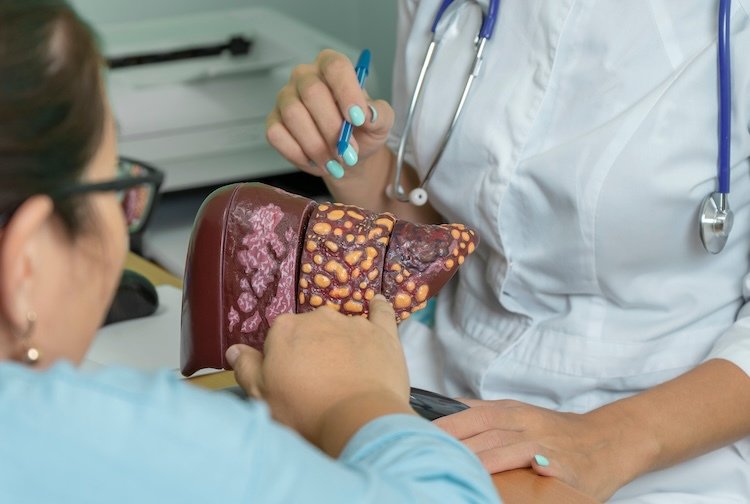RICHMOND, Va. (June 7, 2024) – Turbocharging a GLP-1 agonist used to treat diabetes and obesity could revolutionize care for patients with fatty liver disease, says a world-renowned Virginia Commonwealth University hepatologist.
Results from a Phase 2 clinical trial of survodutide, a dual agonist drug for the treatment of fatty liver disease, were published today in the New England Journal of Medicine and presented at the European Society for the Study of the Liver annual meeting in Milan by lead investigator Arun Sanyal, MD, director of the University of Virginia Strawitz-Sanyal Institute of Liver Diseases and Metabolic Health and professor at the University of Virginia School of Medicine.
The study found that after 48 weeks of treatment with sulvodutide, up to 83% of participants saw visible improvements in their disease, reduced levels of liver fat and inflammation, and no worsening of liver scarring (fibrosis). 75% of treated patients were cured of their disease and saw a significant reduction in liver inflammation, fat, and scarring. Up to 50% of treated patients saw improvements in fibrosis and liver enzymes, and their disease did not worsen.
Agonists are chemicals that mimic hormones and bind to specific receptors in the brain. Drugs commonly used to treat obesity, such as Wegovy and Ozempic, are GLP-1 agonists because they resemble a hormone called glucagon-like peptide 1, which stimulates insulin secretion and lowers blood sugar levels, promoting weight loss. As well as studying its potential in treating fatty liver disease, Sanyal and other liver specialists are also studying whether they can make the drugs more effective by boosting them with additional agonists that act directly on the liver.
The data from the new study suggest that a GLP-1 agonist boosted with a glucagon agonist like sulvodutide “could be a game-changing treatment” for people with fatty liver disease and the fibrosis and scarring that occurs as liver disease progresses, Sanyal said.
“These data suggest that direct targeting of the liver with glucagon agonists, in addition to GLP-1 action, may help resolve non-alcoholic fatty liver disease and ameliorate fibrosis while maintaining the benefits of GLP-1 agonists,” Sanyal said.
Nonalcoholic fatty liver disease, now called metabolic dysfunction-associated fatty liver disease (MASH), affects approximately one in four people worldwide and is closely linked to obesity. A healthy liver contains small amounts of fat, but when it exceeds 5% of the liver’s weight, it can lead to serious health problems, including cirrhosis, liver cancer, and even the need for a liver transplant. Currently, there is only one drug approved by the FDA to treat fatty liver disease, resmetirom, but it does not work for all patients.
Studies in mice suggest that turbocharging GLP-1 agonists may enhance the beneficial effects of GLP-1 agonists on the liver by directly targeting the organ to increase energy expenditure and reduce fat levels.
“These findings are remarkable and exciting, and open a new chapter in the development of drugs to treat MASH with fibrosis. The possibility of a single agent targeting both liver disease and associated disorders may offer hope to millions of people who suffer from both MASH with fibrosis and multiple obesity-related diseases,” Sanyal said.
The study enrolled 293 adults with MASH and various stages of fibrosis from 25 countries over a two-year period. For 24 weeks, patients received weekly injections of a placebo or one of three doses of savodutide (2.4 mg, 4.8 mg, or 6 mg). Over time, participants’ doses were increased to 6 mg and continued for another 24 weeks. Of the 295 participants, 282 (96%) completed the study. As with GLP-1 agonists, gastrointestinal side effects such as nausea, diarrhea, and vomiting were common.
Phase 2 clinical trials test whether new treatments have an effect on the disease.Several Phase 3 clinical trials of survodutide are underway, including a study looking at whether the drug can help overweight or obese patients with fatty liver disease lose weight and reduce fat in their liver.
Obesity is a serious public health issue that leads to other diseases, including type 2 diabetes, liver disease, cardiovascular disease and hypertension. More than 33 million Americans have type 2 diabetes, and Sanyal said 5% to 7% of these people will develop clinically significant liver disease.


